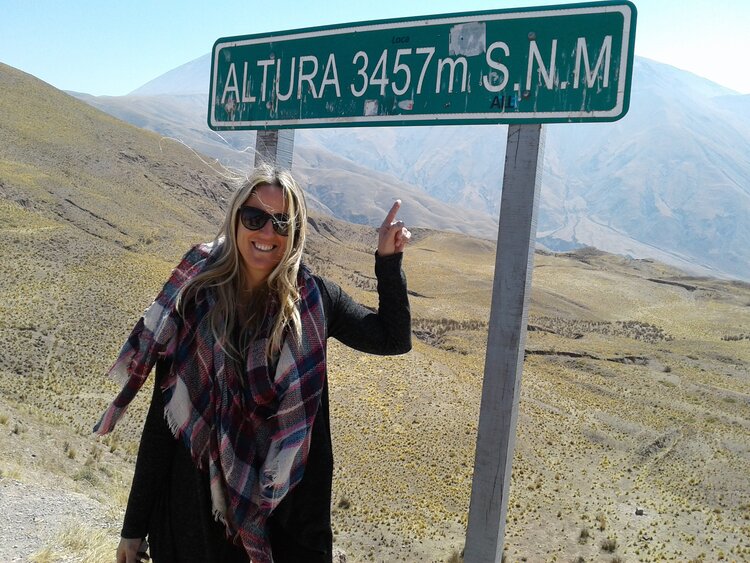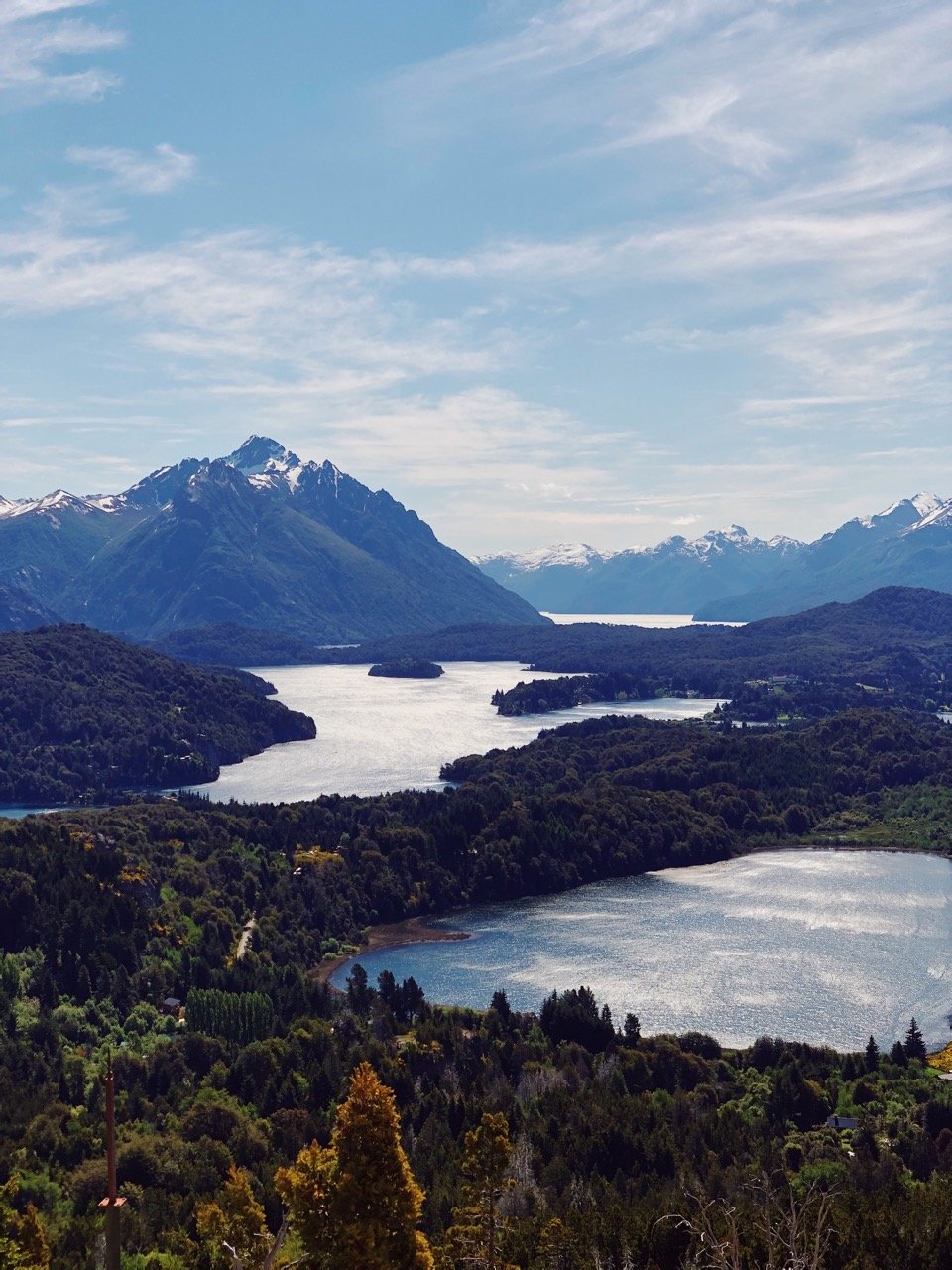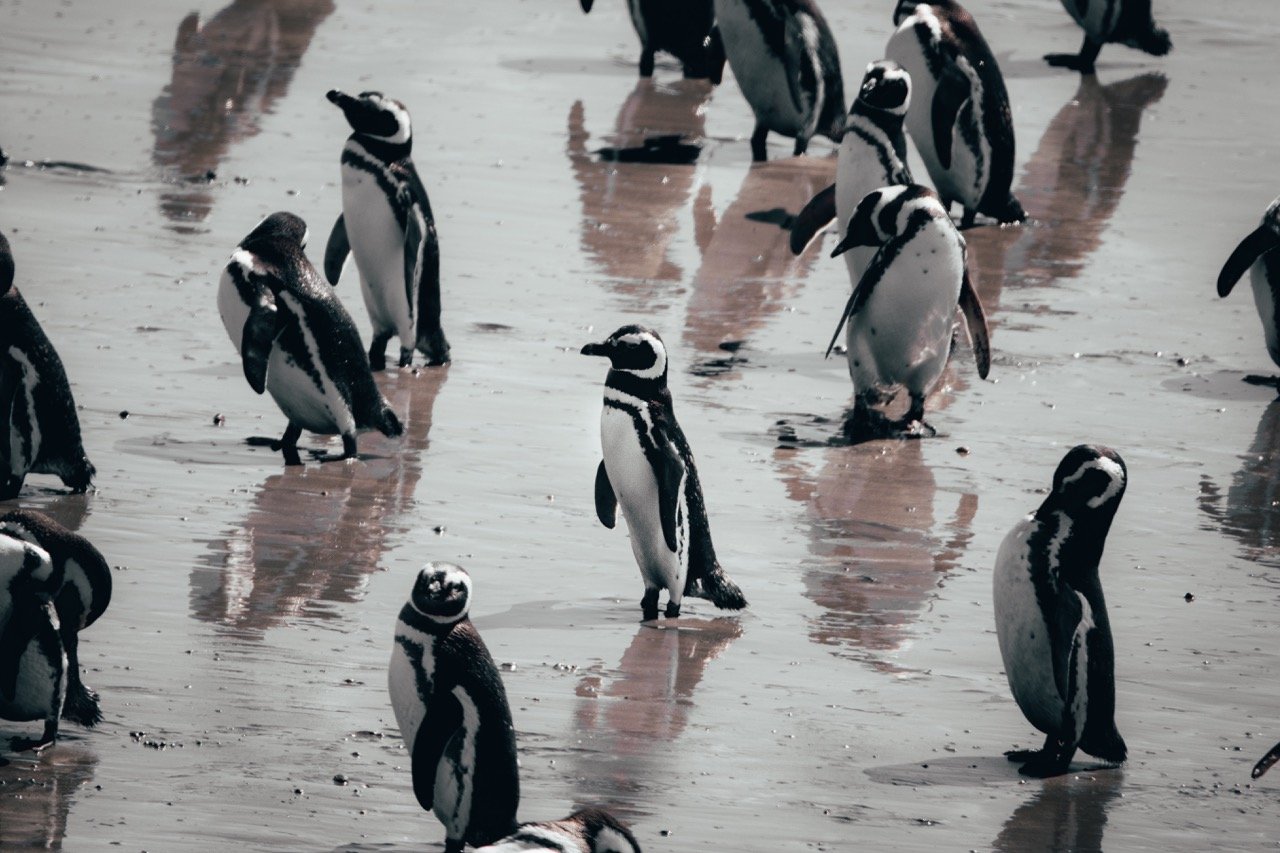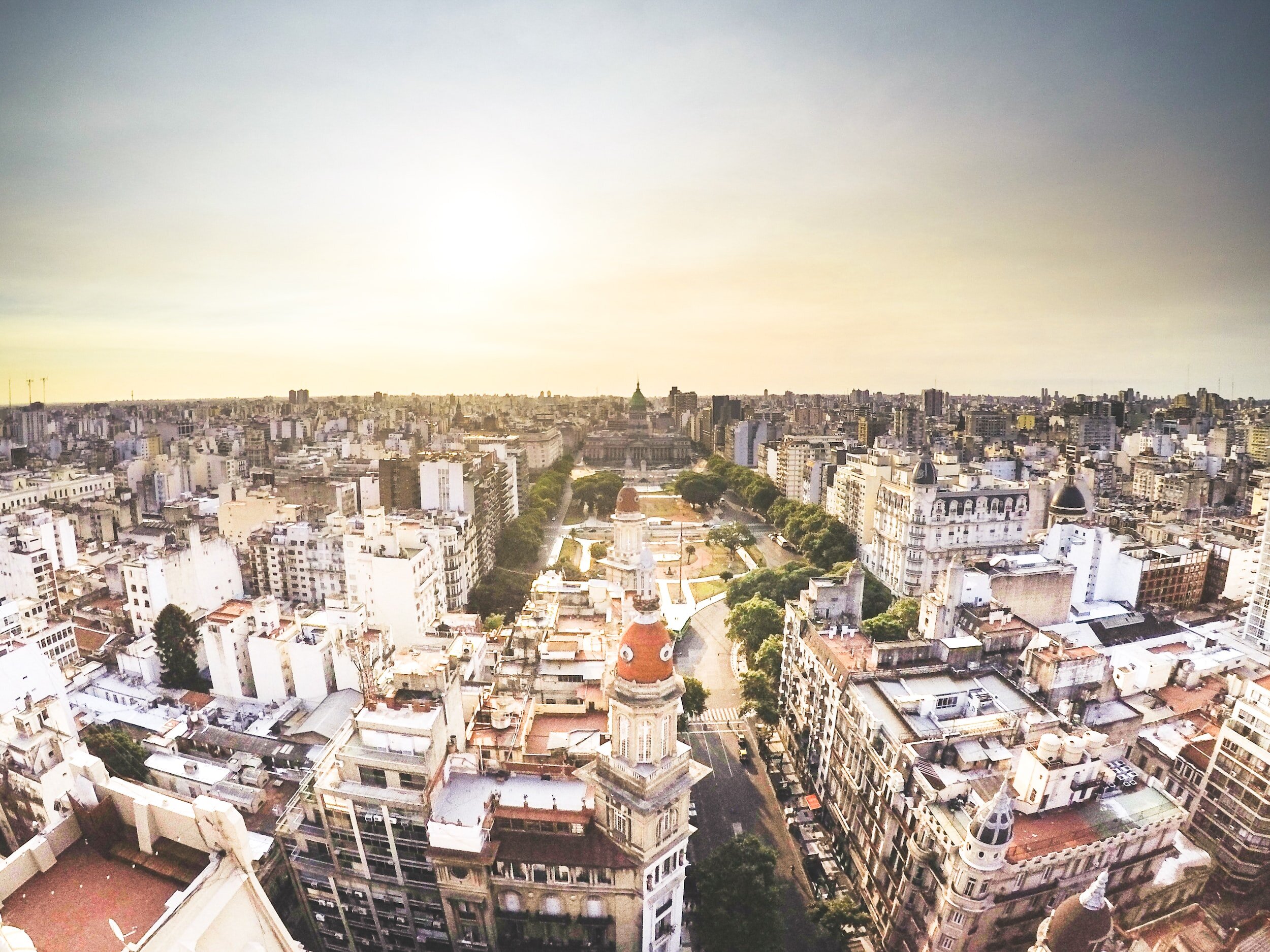10 Fabulous Places to Visit in Patagonia According to a Local
Bienvenidos a todos and welcome to enchanting Patagonia!
Nestled at the southern tip of South America, this far flung region of the world spans both Argentina and Chile, encompassing a vast expanse of untouched wilderness and extraordinary beauty.
With its rugged mountains, rumbling glaciers, turquoise lakes, and pristine national parks, Patagonia offers unparalleled adventure for nature enthusiasts, adrenaline junkies, and curious travelers alike.
This article serves as a guide to some of Patagonia’s very best places. While no list can do justice to the myriad wonders that dot the region, we’ve included a solid mix of highlights along with some of our favorite hidden gems. In all of them, you’ll find ample opportunity to immerse yourself in the region's untamed beauty and connect with its wild-hearted spirit.
Whether you’re searching for exhilarating hiking, wildlife encounters, relaxation and wellness, or simply to journey through the serenity of untouched landscapes, Patagonia promises it all.
More Argentina & Chile travel info
If you could use some one-on-one help planning your itinerary, schedule a Patagonia travel consultation with one of our Local Experts!
Table of Contents
Bariloche
El Bolsón
El Chaltén
Torres del Paine National Park
Perito Moreno Glacier & Los Glaciares National Park
Isla Navarino
Ushuaia
Punta Tombo
Futaleufú
Puerto Rio Tranquilo
Plan your itinerary with local help
If you’re planning a trip to Patagonia and could use some help figuring out a great plan, schedule a Patagonia travel consultation with one of our Local Experts!
These are one-hour Zoom calls where you’ll get to chat with an Argentina or Chile-based travel pro about the trip you’re planning and they’ll share their tips and advice, answer your travel questions, and help you perfect your itinerary.
1. Bariloche
Often dubbed the ‘Switzerland of Argentina’ (a marketing ploy, though not an altogether inaccurate one!) thanks to its Swiss-inspired architecture and mountainside location, Bariloche is the gateway to Patagonia.
In the town’s center, picture wooden chalets with sloping roofs, cobbled streets lined with chocolatiers, and a lively, welcoming atmosphere. With a population of 130,000 people, it is the largest and best connected town in Patagonia. Amenities here are excellent and anything you could need for a journey in the region is available.
The town’s strategic location at the doorstep of the stunning Nahuel Huapi National Park makes it a good base point for explorations around the region as well as a jumping off point for excursions deeper into Patagonia.
Travelers visiting in winter (which runs from June-September) can enjoy Argentina's largest ski resort, Cerro Catedral. The resort offers slopes for every ability, from gentle beginner runs to serious off-piste routes.
The slopes are surrounded by postcard-worthy views, and after a day spent on the slopes, Bariloche has a vibrant Après-Ski scene to enjoy. Picture cozy wooden cabins, mugs of steaming hot chocolate, and bubbling fondue – you wouldn’t be wrong for mistaking it for the Alps.
Outside of winter, Bariloche’s location in the foothills of the Argentine Mountains makes it a popular choice for hikers. The popular Refugio Frey trek, a relatively simple route that traverses through crisp green forests and over serene creeks, is a perennial favorite.
The hike ends with a rewarding view of the dazzlingly blue Laguna Toncek nestled against the backdrop of the looming Cerro Catedral Mountain.
The town is also right on the sparkling shores of Nahuel Huapi Lake, and getting out on its waters is an absolute must. Visitors can travel across the serene waters and visit the Arrayanes Forest, an ancient woodland containing 300-600-year-old trees.
A walk through the forest under the lovely canopy of Arrayáne trees feels like stepping into a fairy tale – perhaps this is why Walt Disney used it as his inspiration for ‘Bambi’ after visiting in 1941.
While Bariloche does retain some of it’s original small mountain town charm, the majority of town has changed and it does need to be said that an explosion in tourism and years of unchecked development have left their mark. While surrounded by nature, it is really a city and it can be both crowded and a bit tacky in the winter and summer high seasons.
In wintertime the town is extremely popular with vacationing Argentines and Brazilians, many of whom come more interested in clubs, parties, and showing off their expensive winter attire than in outdoor activities. Summer sees less of the party crowd, but there is still some of that atmosphere.
Bariloche is a place of contrasts. A city in the wilderness, it isn’t to everyone’s taste. But it’s location and the amenities on offer mean that we almost always recommend at least a quick visit.
2. El Bolsón
The pristine waters of the Río Azul in the wilderness outside of El Bolsón town
Many travelers skip the small town of El Bolsón, but this hidden gem has a lot to offer. Located in Northern Patagonia’s Río Negro province within a rugged valley dotted with fruit trees, El Bolsón boasts serene natural beauty and untouched charm.
The scenery surrounding the town is breathtaking; with the jagged peaks of Cerro Piltriquitron visible from pretty much every street, and dozens of lush forests and glimmering lakes located nearby.
The atmosphere in town is laid back and very welcoming. It’s been a bit of a ‘Hippie’ enclave since the 1970s when a group of bohemians decided to make this idyllic little town their home.
As a result, El Bolsón has a vibrant arts scene, and the town hosts an artisan market that takes place a handful of times every week, with sellers showcasing a range of unique handcrafted delights. It’s a fantastic place to spend an afternoon wandering around, and you can be sure to find excellent street food as well.
The town is also a great spot to base yourself for outdoor activities. The nearby Lago Puelo glistens beneath a backdrop of snow-capped mountains, and its tranquil waters offer ample opportunity for waters sports like kayaking or paddle boarding. Thanks to it’s location slightly off the tourist trail, you’ll pay lower prices for just about everything here too.
Of course, like most of Patagonia, there’s lost of fabulous hiking around. The Cajon de Azul hike is one of the area's best, rewarding trekkers with a refreshing dip in the crystal-clear waters of the Río Azul at its end.
And if you fancy yourself a bit of a gaucho, El Bolsón is the perfect spot to try out horseback riding on a tour through the lovely scenery.
3. El Chaltén
Mt. Fitz Roy near to the village of El Chaltén
El Chaltén is a place that epitomizes the untamed beauty of Patagonia. It’s located in Santa Cruz Province and is often described as Argentina's hiking capital. This is for good reason – the area is jam-packed with some of the most beautiful trekking routes in not just Patagonia, but perhaps the entire world.
This small town has a population of just 1,627 people and it exudes a laid-back and adventurous atmosphere. The streets are simple and unassuming, lined with cozy accommodations, outdoor gear shops, and eateries.
The simple architecture blends harmoniously with the natural surroundings, adding to the town's rustic charm. The craggy peaks of Mt. Fitz Roy soar just beyond the towns limits and are visible from everywhere.
One of El Chalténs most iconic hikes is the Laguna De Los Tres trail, a 15-mile route from the town to the foot of Mt. Fitz Roy (the mountain depicted on the logo of the ‘Patagonia’ clothing brand). The trail winds through lush forests and crosses over sparkling streams, ending at the Laguna De Los Tres – an incredibly scenic lake where you can admire the snowy peaks of Mt. Fitz Roy reflected in the turquoise waters.
There are also plenty of lesser-known hikes for travelers wanting to avoid the crowds. The Loma del Pliegue Tumbado hike covers 10.6 miles and is incredibly underrated. Also beginning in El Chaltén town, the trail gradually gains elevation until it reaches its final viewpoint, from which hikers have uninterrupted views of the rugged granite peaks.
El Chaltén is of course one of Patagonia's more popular destinations. This means that the small town can get pretty busy during peak season.
Although a high season visit is not unpleasant and there’s certainly no reason to avoid the town regardless of when you come, if you’re particularly keen to avoid crowds, you might prefer to visit in shoulder season months like November or April.


4. Torres Del Paine National Park
A lake in Torres del Paine National Park
Chile’s Torres del Paine National Park is a destination that awes even the most jaded travelers. Considered by many as Patagonia’s ‘Crown Jewel’, the UNESCO Biosphere Reserve spans over 1,800 square kilometers and is a genuine natural wonder.
The scenery within Torres del Paine is exceptionally unique; you’ll find everything from soaring granite peaks to glaciers that tumble into turquoise lakes. Don’t miss it.
Naturally, hiking ranks pretty high on the list of the best things to do in the region. Many travelers visit specifically to hike the famous ‘W’ and ‘O’ circuits; multi-day treks which meander through awe-inspiring valleys, past tumbling waterfalls, and through pristine wilderness. A constant accompaniment to the hikes are views of the vast granite columns that rise majestically overhead.
Trekkers have the option to truly get out into the wild by either camping or staying in basic ‘refugios’ each night. For those after a bit less adventure, fret not as there are also plenty of luxury accommodations available.
If you’ve got the budget for it, the luxury Awasi Patagonia is an almost outrageously beautiful place to stay – after a long day of hiking, you can return home to one of their beautiful cabins to enjoy a glass of wine and a soak in the hot tub all within pure wilderness.
The easiest way to access the park is via bus from the town of Puerto Natales. Torres del Paine can also be accessed from Argentina, but crossing the border at this point is fairly time-consuming and expensive. Any money you save on accommodation in Argentina will hardly be worth the hassle. We very much recommend visiting via a base in Chile.
5. Perito Moreno Glacier and Los Glaciares National Park
Perito Moreno glacier
This is the place to visit in Patagonia if you want to feel like you’ve arrived at a whole different planet altogether. Embedded into the rugged landscape of the Andes mountains, Los Glaciares National Park stretches over a whopping 2,800 square miles of Argentine Patagonia and is a UNESCO area of exceptional natural beauty.
The Perito Moreno Glacier is the park's gem; a colossal ice formation with towering walls of ice of impossibly blue hues. There are multiple ways to explore it - the simplest being from the viewing platforms and pathways. This is an ideal option for budget-conscious travelers as you can do it without joining a tour.
Top tip - bring a bottle of Malbec to enjoy as you watch the mammoth chunks of ice crumbling off the glacier and crashing into the lake below. Also, while ice cleaving off a glacier might sound like bad thing, it’s not! This is one of the only glaciers in the world that is advancing rather than retreating.
For those seeking a more adventurous experience, ice trekking on the glacier is a must. Trekking companies offer two options for this – the ‘Big Ice’, and the ‘Mini Trekking’ trip. Whichever one you opt for, donning your crampons and traversing the ethereal landscape is an exhilarating once-in-a-lifetime opportunity.
For a different perspective on the natural phenomenon, you can also get out on the waters of Lago Argentino in a kayak. As you glide across the calm surface, the grandeur of Perito Moreno unfolds directly in front of you. The distant sound of the glacier cracking and shifting is rather chilling, as is the discovery of icebergs lurking below the surface. Perhaps not for the faint-hearted, it’s a pretty captivating experience!
As one of Patagonia's most popular sights, Los Glaciares can get very busy. To avoid the biggest crowds, plan your visit outside of January and February (vacation months for Argentines) and always be sure to enter the park at opening hours before the big tour buses start to arrive.
6. Isla Navarino
Isla Navarino seen from the sea. Photo: Horacio_Fernandez, CC BY 3.0, via Wikimedia Commons
Tucked away in the southernmost reaches of Chilean Patagonia, Isla Navarino beckons intrepid travelers with pristine beauty and off-the-beaten-path allure. Known as the "Land of the Yaghan," this remote island holds a certain mystique that attracts those searching for wild landscapes and rustic charm. The island's main ‘city’ is Puerto Williams, which has a population of just 2,900.
Isla Navarino is home to a myriad of awe-inspiring landscapes, making it an absolute haven for nature enthusiasts. Trekking the Dientes de Navarino circuit (believed to be the southernmost trek in the world) is a popular choice, taking you through rugged mountains, dense forests, and serene lakes.
The challenging hike rewards trekkers with untouched nature and breathtaking views of snow-capped peaks and fjords. For those who want an even more off-the-beaten-path option, Terra Incognita is one of Patagonia's most underrated treks.
The island is also rich in indigenous heritage, providing an opportunity to learn about the fascinating culture of the Yaghan people. A good start is a visit to the Martin Gusinde Anthropological Museum in Puerto Williams, which showcases artifacts, exhibits, and photographs that shed light on the traditions and history of the Yaghan community.
There are also opportunities to engage in cultural exchanges, participate in workshops, and gain a deeper understanding of the island's indigenous roots.
The most captivating aspect of Isla Navarino is its remoteness. Despite being Chile's claim to ‘the end of the world’, it somehow escaped the fame and development of Ushuaia.
Far from the bustling tourist crowds, the pristine island offers a chance to disconnect from the outside world and find solace in boundless nature; a rare chance to embrace sollitude and connect with nature in its purest form.

Connect with a Patagonia-based local expert for help perfecting your itinerary, answers to all your travel questions, and fabulous local tips for a better visit!
7. Ushuaia
The town of Ushuaia
Proudly holding the title of the southernmost city on earth and known by all as the "End of the World," Ushuaia astounds travelers with its stunning natural beauty, unique location, and array of exciting activities. A true frontier town at the edges of the earth, the atmosphere of adventure is palpable here. As you walk through the colorful streets, you’ll find yourself surrounded by fellow adventurers with a real sense of wonder in the air.
As the gateway to Antarctica, Ushuaia primarily draws adventurers embarking on polar expeditions, but there are plenty of other reasons to visit.
Visitors can Sail on the Beagle Channel, where dramatic landscapes made up of extraordinary glaciers and remote islands unfold before your eyes.
There’s also no shortage of exceptional wildlife to discover in Ushuaia - playful seals basking in the sun, waddling penguins, and dozens of whale species including orcas and humpbacks. Hikers can trek in the enchanting Tierra del Fuego National Park, which is surrounded by towering mountains, lush forests, and mirror-like lakes.
The trek to Laguna Esmeralda is a particular highlight, rewarding hikers with a pristine emerald lake nestled amidst breathtaking scenery. The hiking on offer in the region is sure to leave you in awe of nature's beauty.
Despite its remote location, the town is home to some exceptional food and drink offerings. Every visitor should indulge in the culinary delight of tasting King Crab, a local delicacy renowned for its succulent and flavorful meat.
For an evening tipple after a day of exploring, visit Ramos Generales, the 111-year-old general store that has been turned into a charming wooden-clad restaurant and bar. Admire all the vintage relics adorning the walls, and raise a glass to the fascinating history of Ushuaia.
Unsurprisingly considering its geographic location and very obvious adventure appeal, Ushuaia has a rather touristy side. It should absolutely still be visited though - it offers incredible opportunities to connect with nature, embark on truly unique adventures, and immerse yourself in the captivating atmosphere of the "End of the World."
8. Punta Tombo
Penguins in Punta Tombo
Located on the windswept shores of Argentina's Atlantic coast, Punta Tombo is a wildlife sanctuary that especially appeals to nature enthusiasts and wildlife lovers. Situated approximately 100 kilometers south of Trelew, this rugged peninsula is home to one of the largest Magellanic penguin colonies in the world. The only other place on earth with such a large colony is Antarctica, so it’s rather unique.
Visiting Punta Tombo provides a unique opportunity to witness the remarkable behavior and habitat of these charismatic creatures up close. From September to April, the area becomes a bustling breeding ground, as thousands of penguins arrive to nest and raise their chicks. As you stroll along the designated walkways, you'll get to enjoy the sight (and sounds!) of penguins waddling, nesting, and feeding their young.
Beyond penguins, Punta Tombo is home to lots more wildlife. Keep an eye out for South American terns, cormorants, sea lions, and even occasional orcas in the surrounding waters.
In addition to wildlife encounters, Punta Tombo offers gorgeous coastal landscapes, with desolate beaches, dramatic cliffs, and panoramic ocean views. Nature photographers would be well-advised to bring a spare memory card!
9. Futaleufú
An alpine lake in the mountains near to Futaleufú
Deep in the heart of Chilean Patagonia, Futaleufú is a bit of a hidden gem. Located in the Los Lagos Region, this tiny town has just 2,297 residents and is brimming with deep forests, powerful rivers, and soaring mountains.
Renowned worldwide for its thrilling whitewater rafting experiences, the raging Futaleufú River’s clear water and powerful rapids attract adrenaline junkies from around the globe. Experienced rafters can send up to class V+ rapids and will want to plan multiple days to get the most out of their visit. For those looking to enjoy the river with a slightly less “hair-raising” experience, there are but there are also lots of more gentle and intermediate routes.
The rafting in Futaleufú is one of the town's main draws, but there is a plethora of other outdoor activities like hiking, swimming, and mountain bike riding, The town also has a gaucho legacy, so it’s a great spot for horseback riding.
Futaleufú is a also an ideal destination for simply relaxing and enjoying uncontaminated wild. It’s always a pleasure to just relax on the river banks and breathe in the crisp mountain air.
Because of its remoteness, camping in the area is a truly magical experience; you can spend the night under a blanket of stars, with nothing but the sound of whistling wind and chatty cicadas interrupting your thoughts.
Beyond the outdoors, Futaleufú town is a warm and welcoming place. Its streets are charming and the hospitality here is second to none. Visitors can expect to interact with friendly locals and may even find themselves invited over for a dinner or two.
Futaleufú isn’t on everyone’s Patagonia itinerary, but it should be.
10. Puerto Rio Tranquilo
One of many curious geologic formations in General Carrera Lake
Situated along the shores of the majestic General Carrera Lake in Chilean Patagonia, Puerto Río Tranquilo is a tranquil (as the name suggests!) town best known for its nearby marble caves. Located in the Aysén Region, it’s a great spot for an off-the-beaten-path adventure.
The town itself is a charming and laid-back community in a jaw-droppingly beautiful area. With a population of just over 400 residents, it provides an authentic glimpse into local Patagonian life.
The main attraction for visitors are the Marble Caves, located just outside of town on the General Carrera Lake. These hauntingly beautiful rock formations on the lakes’ edge have been sculpted by the water’s relentless currents over thousands of years, resulting in a system of caves over the water with a labyrinth of smooth, swirling patterns that take onshades of blue and white. Seeing them in real life is a simply unmissable opportunity and is best done from the water by kayak.
Aside from the Marble Caves, Puerto Río Tranquilo also serves as a gateway for numerous outdoor adventures. Those with a bit of time can explore the surrounding area via hiking trails that lead to breathtaking viewpoints, embark on kayaking excursions on the lake, or simply relax on the peaceful shores and immerse themselves in the tranquility of nature.
A visit to this little hidden gem in Chilean Patagonia promises an unforgettable experience to get up close with the marvels of our planet without the typical crowds. Its off-the-beaten-track location means that planning and research are required to get there, but it’s a destination that is very much worth the effort.



Karen Petersen
Argentina Expert based in Patagonia
¡Hola y buenos días! 👋
Hi, I'm Karen, and I've been a tour guide and travel consultant here in Argentina for the last 15 years. If you're looking for some local advice on your trip, I'd love to help!
Learn more Book a consultation
Chat with a Patagonia expert
























